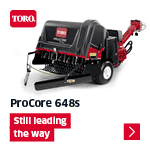Steven Brown: How to calculate profit and loss in the bar and restaurant
Whenever I am called in to assess the viability of a food and beverage (F&B) outlet there are some key financial facts I will review every time. I thought I might share them with you as a guide to enable you to measure how well you are performing against industry norms.
There are essentially two areas of finance that need to be reviewed regarding your F&B operation.
So let’s look at how you currently operate with your calculations.
In any business you have to start right to finish right! If you don’t generate the correct levels of profit and margin it can make a devastating impact on the bottom line profit that your F & B operation contributes to the club. By using tried and tested formula it is easy to measure your performance at a glance.
When I am tutoring delegates on my finance course I operate the Janet and John approach. Finance can frighten non-finance people (like me) so I communicate all finance in an easy to understand way that people at all levels can buy into. Forgive me therefore if I do the same here.
If I want to know how much gross profit and margin I make on every sale, how do I work it out?
There are four steps. Let me explain the formula and then give you an illustration of how it might work.
Step one
Retail price per unit (VAT included) / 1.175
= selling price per unit (VAT excluded).
This step simply removes the VAT from the price your customer pays you.
Step two
Cost of container / number of units in container = cost price per unit.
This step shows you how much you paid, VAT exclusive, for each unit purchased.
Step three
Selling price – cost price = gross profit (£s).
This step uses the answers from steps one and two and shows you how much money you make every time you sell, say, a pint.
Step four
Gross profit / selling price X 100 = gross margin (%).
This step simply converts the gross profit (answer from step three) into a percentage (or margin). We do this so we can measure ourselves against industry norms (for golf clubs) and the Inland Revenue’s expectations!
Let’s put some figures in place of the words to illustrate the formula:
• We retail a pint of lager for £2.40
• We paid £101 for ll gallons at list price.
Important notes: The retail price of £2.40 does not take account of any discount given to members and the cost price takes no account of any discount received from the supplier.
If both of the above do apply to you then simply insert the reduced figures and use the formula. (If not calculate the discounts at period end).
Step one
£2.40 / 1.175 = £2.04 selling price per unit (rounded down).
Step two
£101.00 / 88 (pints) = £1.15 per unit (rounded up).
Step three
£2.04 – £1.15 = 89p (gross profit).
Step four
89p (GP) / £2.04 (SP) X 100 = 43.6 per cent gross margin (rounded up).
So in effect every time we sell a pint we make 89p gross profit as a contribution towards the running cost and net profit.
This formula works on every product and will produce a wide range of margins.
Remember, profit is the real key – you can’t bank percentages but they do give you a guide on whether or not your retail pricing policy is varying from month to month. (Check your stock results).
By reviewing your margins you can see if any particular item is being sold in large quantities but with a low margin that is pulling down the overall margin for the outlet. If it is, increase the retail price, buy at a better price or de-list it!
Now let’s look at the second key formula.

My wholesale price of lager has been increased. How much do I need to increase the price of a pint to maintain my same level of profit?
This is a super formula. Unlike the last one with four steps this has only one:
Cost of container / number of units in container / cost price percentage X 100 X 1.175 = the new retail price.
The cost price percentage is easily calculated in the following way:
Selling price per cent – gross profit per cent
= cost price per cent.
If you convert that into percentages it looks like this:
Selling price (100 per cent) – gross profit (say 40 per cent) = cost price of 60 per cent.
The selling price always equals 100 per cent. If therefore your gross profit percent is 40 per cent then the cost price percentage must be 60 per cent as the two figures added together must equal 100 per cent.
Let’s use figures from our first example to illustrate.
If the wholesalers have increased 11 gallons of lager from £101.00 to £103.00 and we want to maintain our 43.6 per cent (from the first example) how much do we have to charge as a new retail price using our formula?
£103.00 (new cost price) / 88 (pints in a container) / 56.4 per cent (cost price per cent) X 100 X 1.175 (current VAT rate) = £2.44 new retail price per pint (rounded up).
By using this formula there is no need to guess at new retail prices following an increase! You will maintain your same level of profit or, as in our example shown, increase it, albeit marginally.
And finally formula three.
You have decided to hold a one off event to promote the F&B facility and bring awareness of the services you provide.
We are going to hold a music night to illustrate the versatility of the venue. How much money must we take on the evening for the event to break even? (The break even point is the point at which your event neither makes a profit nor a loss – it simply covers all the additional costs incurred for the event.)
The formula for calculating the break even point is:
Total overheads / overall gross margin X 100
X 1.175 = BEP
If, for example, the known data is:
a) Cost of Music – £250
Extra Staff – £100
Advertising (internal) – £25
Staging/Lighting – £200
b) Overall margin is 55 per cent.
Now let’s put the numbers into the formula:
£575 / 55 per cent X 100 X 1.175 = £1228.41.
This means that the event does not make a profit until £1228.41 has been exceeded! After this figure it does.
So how can I help reduce the BEP?
• Charge ticket money say £10 a head to include food
• Run a raffle (using free stock)
• Ask a supplier to help with free goods to be sold at 100 per cent margin.
So, if you sold 75 tickets for the event this would generate £750 before a pint has been sold and thereby help to defray the costs.
You may even decide not to hold the event because you know in your heart of hearts that you would never sell 75 tickets! Not a pleasant thought but at least you would not lose money on the event. Too many outlets continue to turnover, but not profit.
By using tried and tested formula we have control over our projected profits with no guess work involved. If it is your personal responsibility to ensure the profitability of your F&B operation then start right with the formulae and start right now!















Fantastic. That’s the most useful explanation with example I have seen anywhere on the Internet. This will save me heaps of time – I have tested it and now I can check to see if my Point of Sale software is actually reporting accurately.